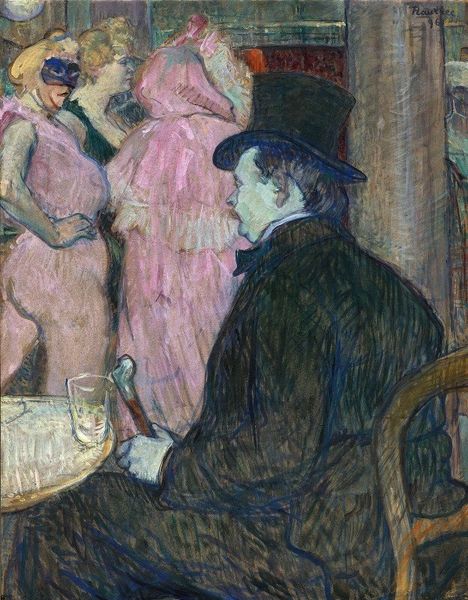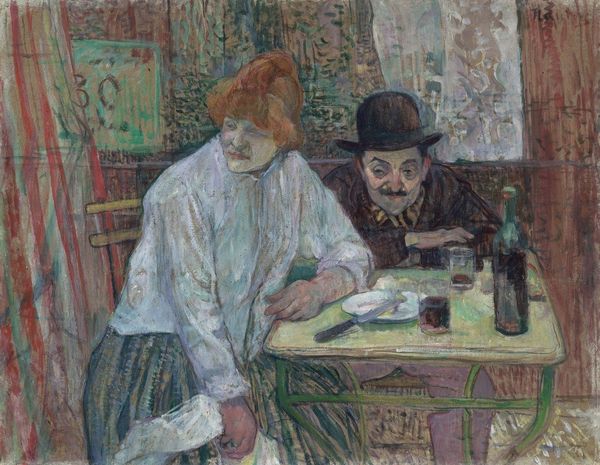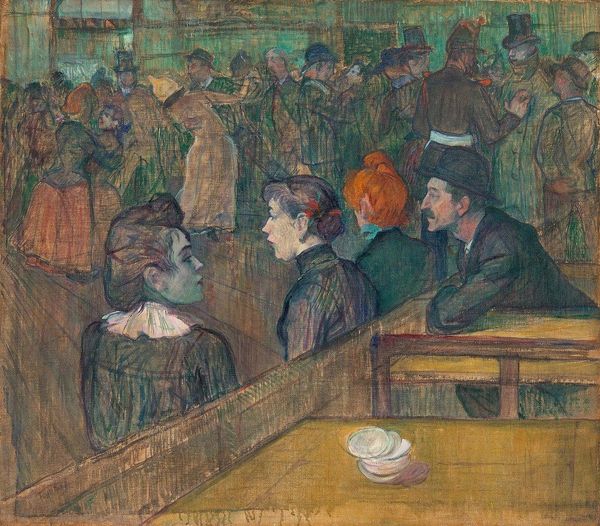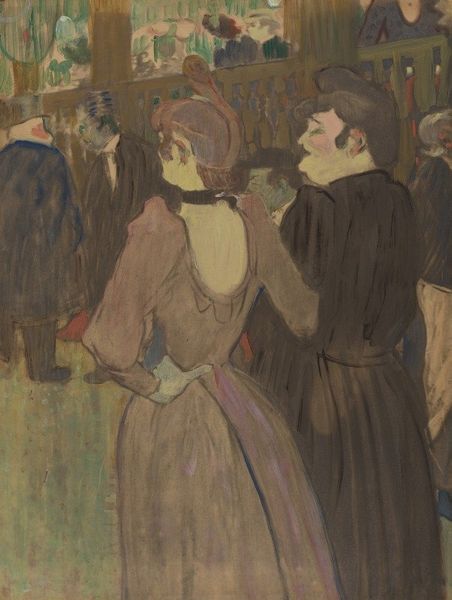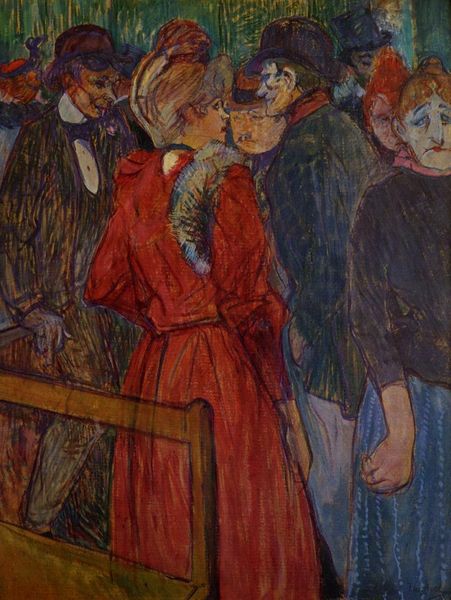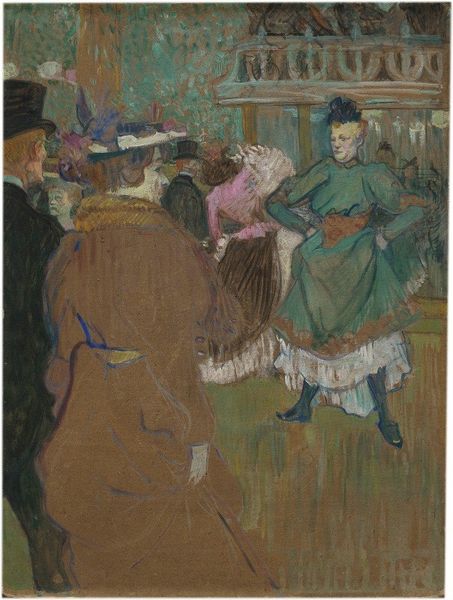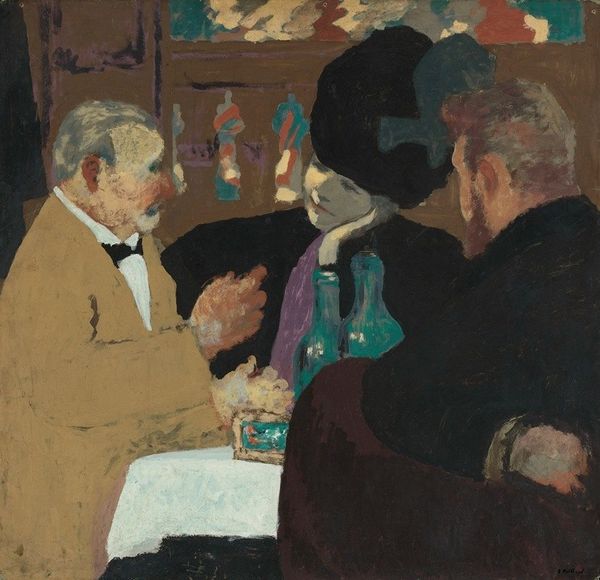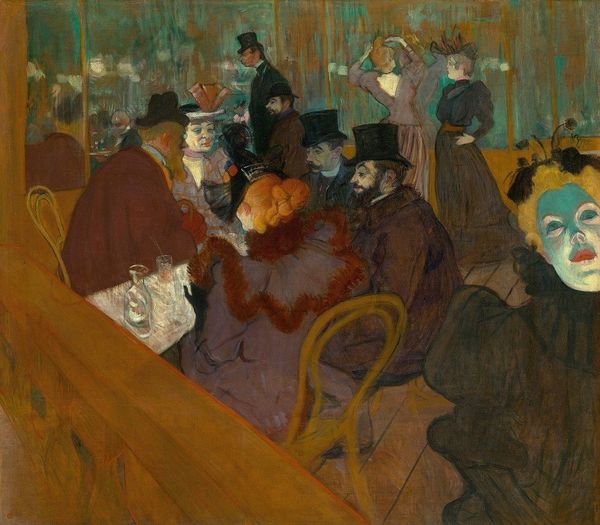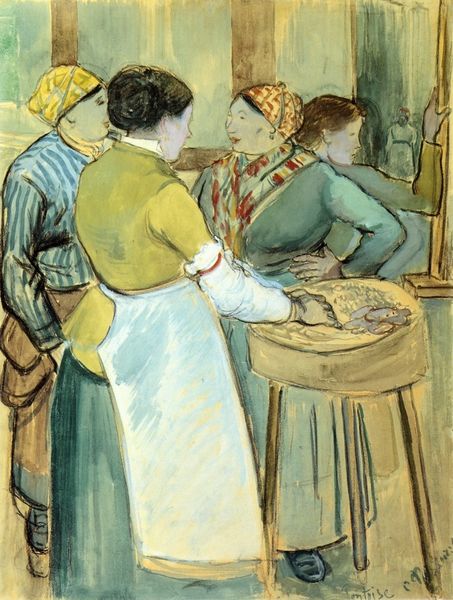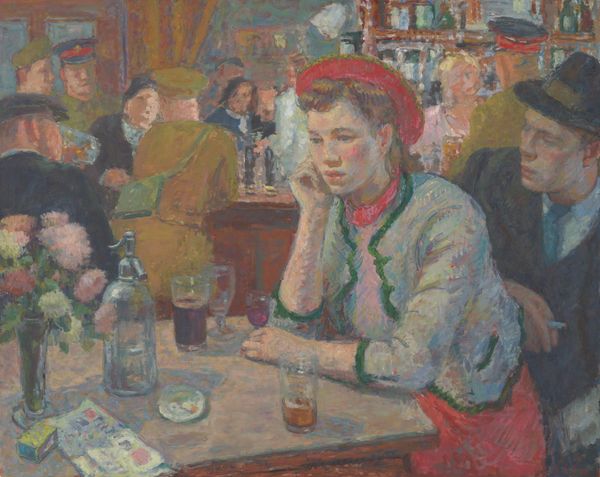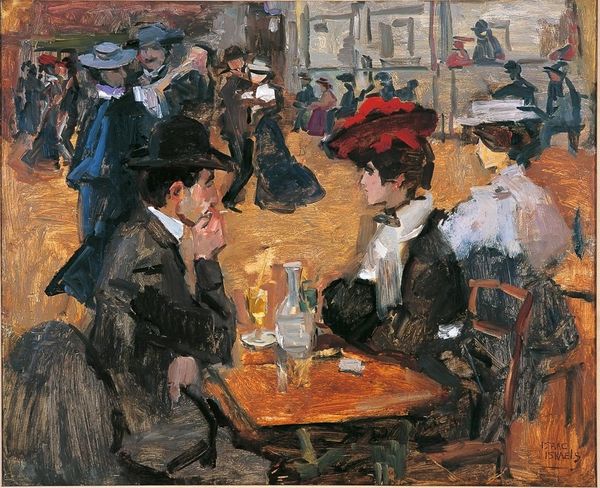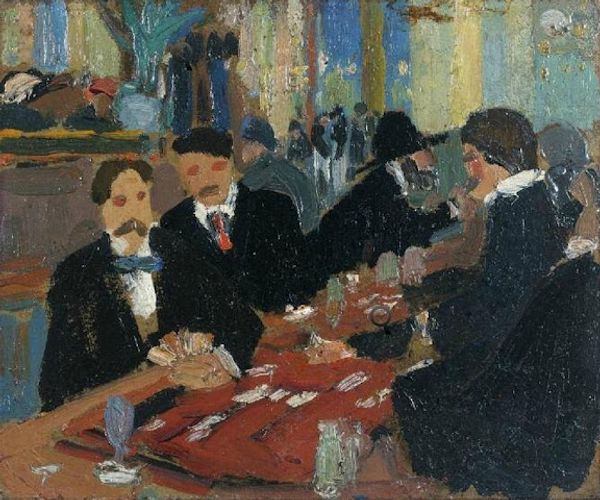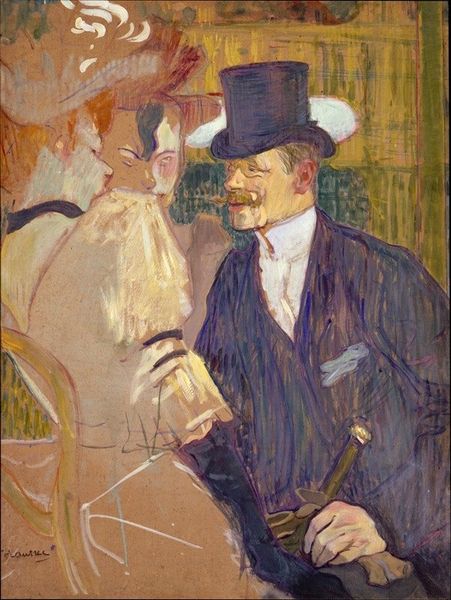
Copyright: Public Domain: Artvee
Henri de Toulouse-Lautrec painted "A Corner of the Moulin de la Galette" with oil on canvas. It's important to note that oil paint was already an industrial product at this time, available in tubes. Look closely and you will see how the painting surface has a loose, sketch-like quality, with visible brushstrokes that reveal the process of its creation. The texture of the paint itself adds depth and dimension to the scene, almost as if we are present in the bar. Toulouse-Lautrec was a master of capturing the fleeting moments of modern life, and in his work, we can see a reflection of the social dynamics of late 19th-century Paris. The materiality of oil paint, once a carefully guarded secret of Renaissance masters, had by this point become a widely available medium, used to document all aspects of modern life. This democratization of artistic materials allowed artists like Toulouse-Lautrec to engage with everyday subjects. By focusing on the materials and processes behind the creation of this artwork, we gain a deeper understanding of its cultural significance and its place within the history of both art and society.
Comments
No comments
Be the first to comment and join the conversation on the ultimate creative platform.
